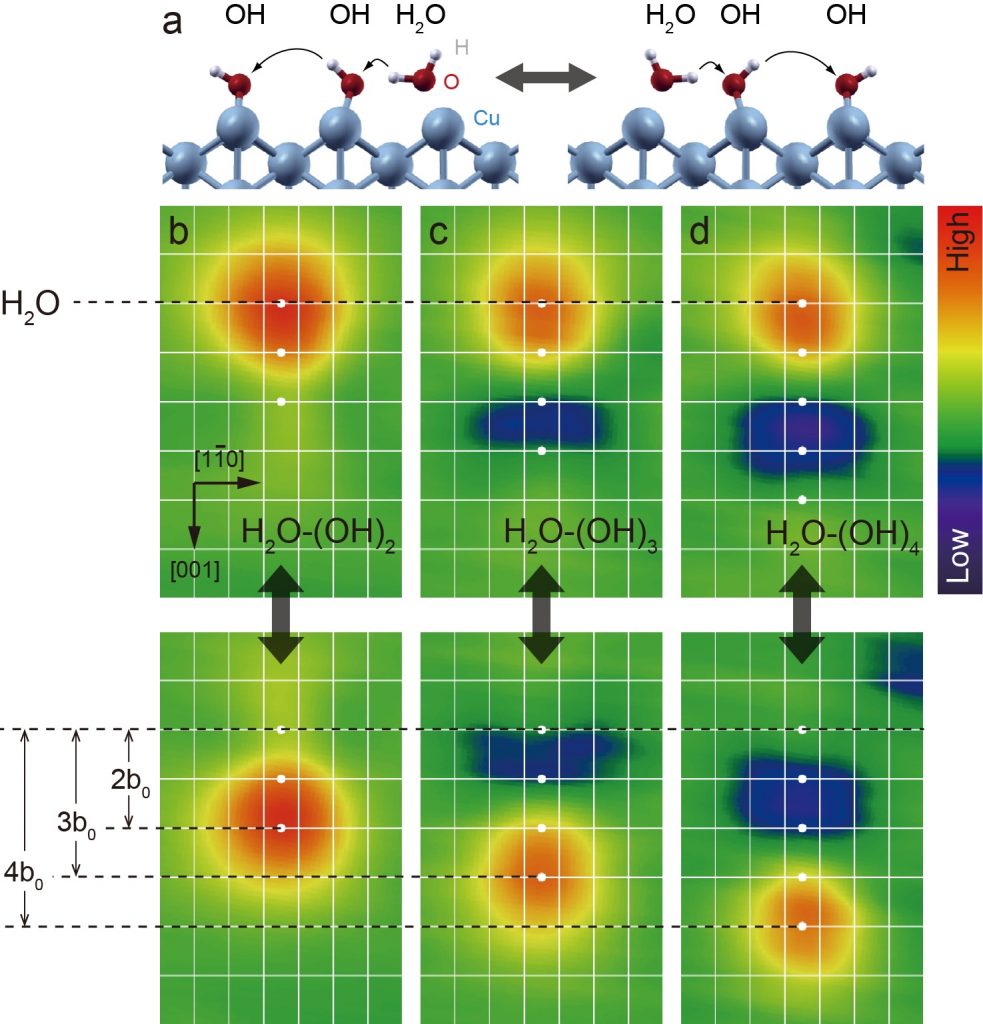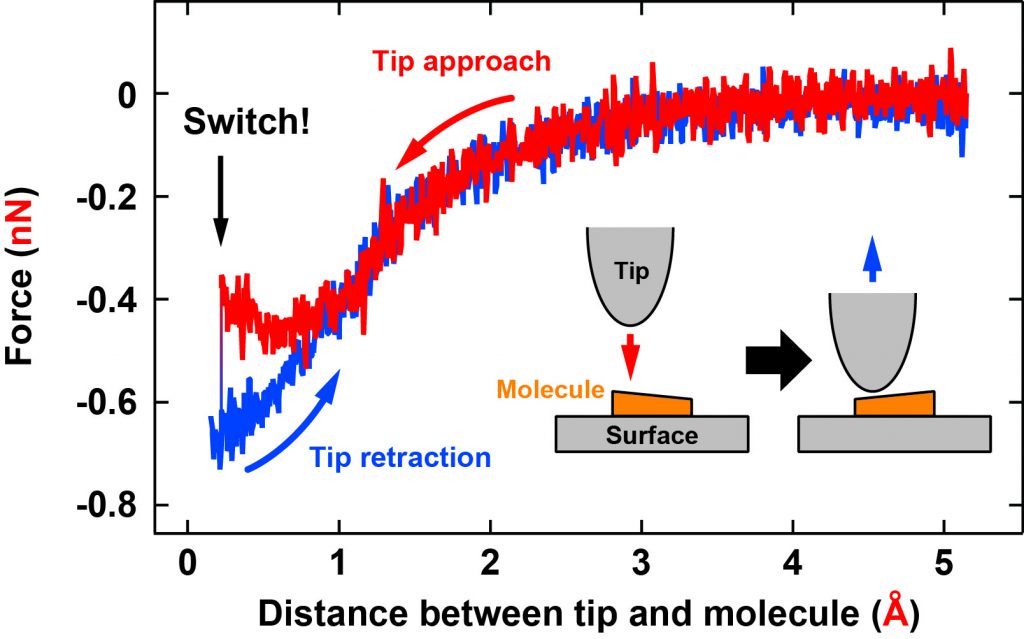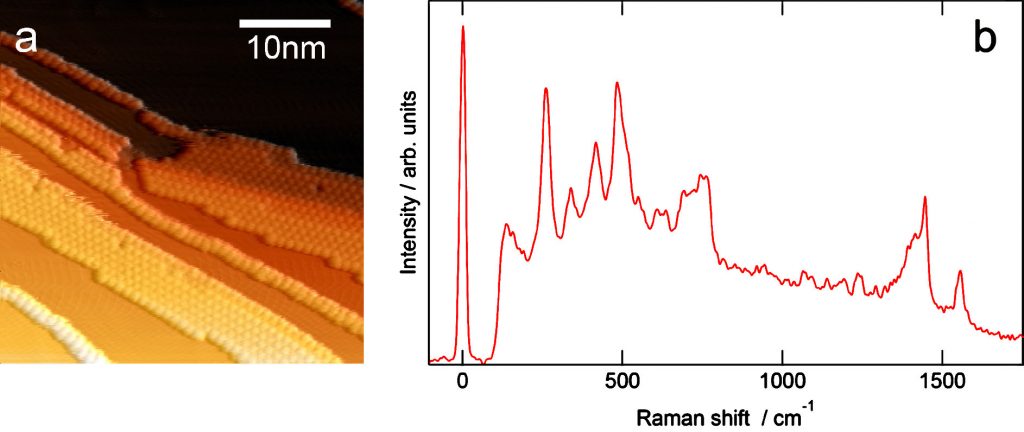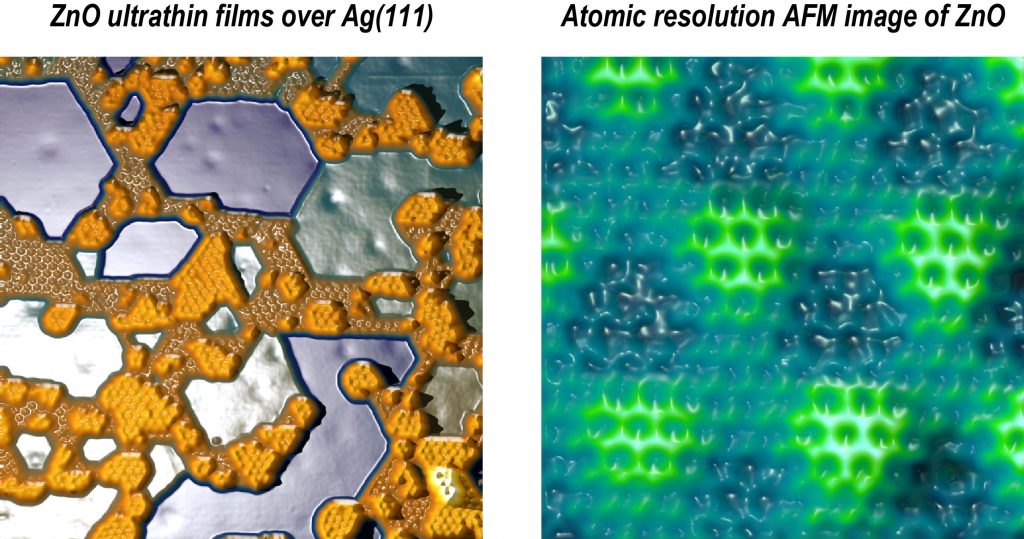H atom relay reaction
Single-molecule manipulation with a low-temperature scanning tunneling microscope enables us to construct artificial model systems to study H-bond dynamics. For instance, a sequential H atom transfer was examined in one-dimensional water-hydroxyl complexes on a Cu(110) surface at 5 K. The transfer reaction is triggered by vibrational excitation via an injection of energetic tunneling electrons. [Nature Materials 11, 167 (2012).]

Single-molecule tautomerization
Tautomerization—intramolecular H atom transfer—is a fascinating model to study H atom dynamics. We investigate tautomerization of single porphycene molecules on surfaces. Porphycene is a structural isomer of porphyrin but shows a strong H bonds within the inner cavity (N–H···N) which makes porphycene an interesting model to examine H bond dynamics. Tautomerization of porphycene has been found to be induced by various stimuli, i.e. heat, electric, light energies, and force. Using atom/molecule manipulation it was also revealed that the tautomerization behavior can be controlled by atomic-level environment of a single molecule. [Phys. Rev. Lett. 111, 246101 (2013).; Nature Chem. 6, 41 (2014).; ACS Nano 9, 7287 (2015).; Nano Lett. 16, 1034 (2016).]

Heat, electric, and light energy are common ways to activate chemical reactions. Applied force is another way, but studies for such a mechanical activation are limited, and this activation is poorly understood at the single-molecule level. We investigate a force-induced chemical process of a single molecule using non-contact atomic force microscopy. [Nature Chem. 8, 95 (2016).]

Chemical identification of single molecule is a long-standing goal in the field of molecular spectroscopy. Vibrational spectroscopy is one of the most powerful and commom methods to identify chemical species. We develop the combination of Raman spectroscopy with scanning tunneling microscopy (STM), so-called Tip-Enhanced Raman Spectroscopy (TERS). The figure shows a typical STM image of C60 molecules on a Au(111) surface and TERS spectrum. Although C60 molecule intrinsically has a very small Raman cross-section, the characteristic modes are clearly detected in TERS spectrum due to the strongly enhanced near-field (localized surface plasmon).

Oxide films play an important role in a wide range of technical applications such as electronic devices, photocatalytic energy conversion, gas sensors, and heterogeneous catalysis. Ultrathin oxide films epitaxially grown on single-crystal metal substrates have often been used as well-defined model supports for metal nanoparticles. We investigate ultrathin zinc oxide films using low-temperature scanning tunneling microscopy. [J. Phys. Chem C 118, 27428 (2014).; J. Phys.: Condens. Matter 28, 494003 (2015).]
